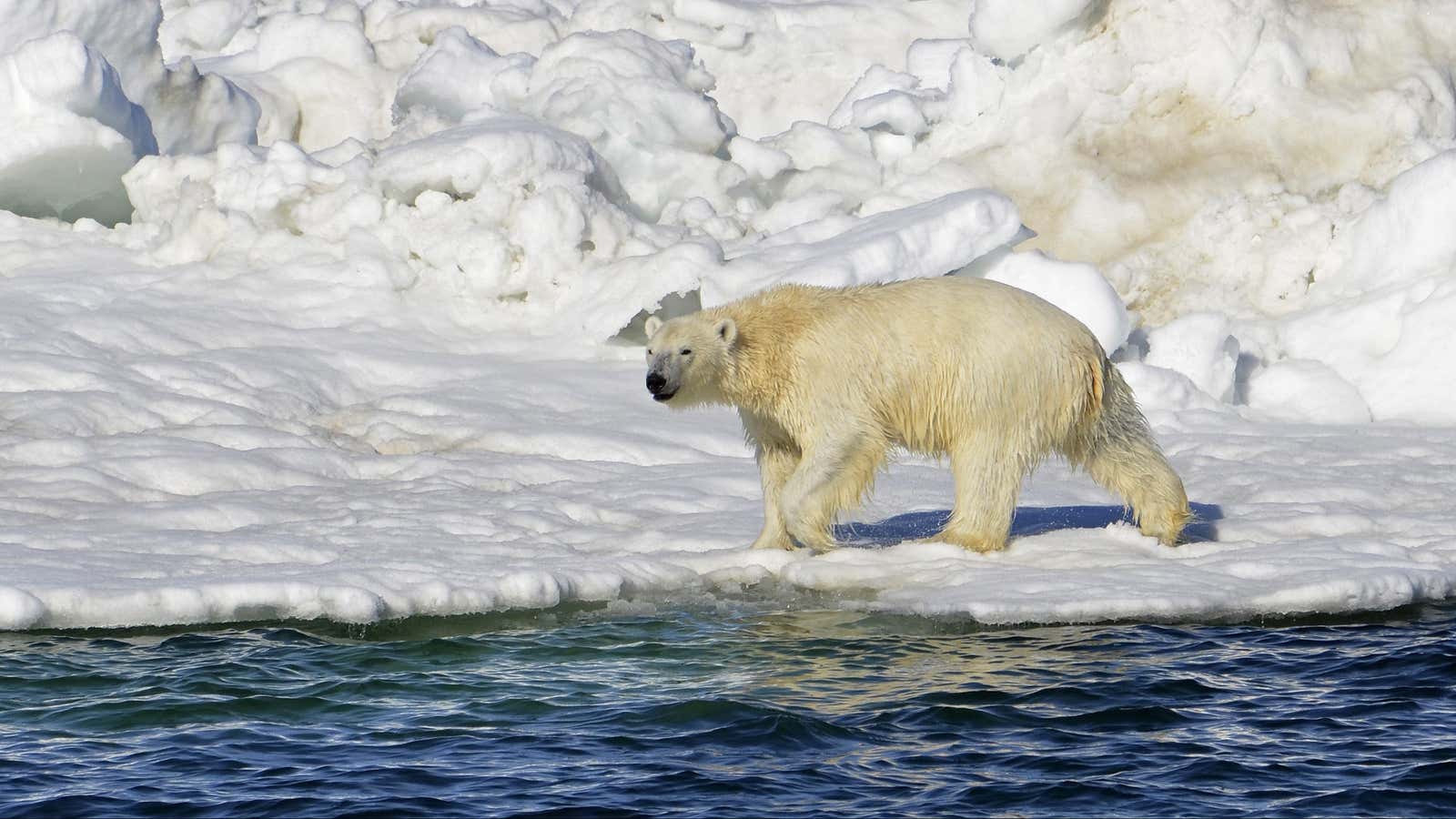In 1595, two members of an Arctic expedition led by Dutch explorer William Barent were eaten by a polar bear in the Russian Arctic.
The two men were resting when “a great leane white beare came sodainly stealing out, and caught one of them fast by the necke, the beare at the first faling upon the man, bit his head in sunder,” according to an account of the expedition’s trials. The ship’s crew attempted to drive the bear away: “hauing charged their peeces and bent their pikes, set vpon her, that still was deuouring the man, but perceuiug them to come towards her, fiercely and cruelly ran at them, and gat another of them out from the companie, which she tare in peeces, wherewith all the rest ran away.”
That scene opens a scientific paper published in July in the peer-reviewed journal Wildlife Society Bulletin, which found that attacks by polar bears—particularly emaciated ones like the one Barent came across in 1595—may become more common as climate change advances.
Polar bears don’t really want to eat people. They’d much prefer to lumber out onto the Arctic sea ice and grab a seal meal. In fact, they’ve evolved specifically to use the sea ice as a fishing platform. But climate change means less sea ice. And less sea ice means hungrier polar bears.
“It’s a pretty logical flow of events after that,” says James Wilder, the head of the US Fish and Wildlife Service’s polar bear program in Alaska, who authored the paper. “When bears get into poorer and poorer body condition their willingness to take risks to get something to eat goes up considerably.”
The emboldened, emaciated bears are more likely to wander on land towards human settlements in search of food. Since 2000, 88% percent of attacks have occurred between July and December, the period when sea ice is at its minimum. “It’s soon to be ice free,” notes Wilder.” “If we don’t see a reversal of sea ice conditions, it would be reasonable to expect an increase in polar bear attacks.”
That increase may have already begun: Of all attacks the team counted from 1870 to 2014, more than 20% of them occurred between 2010 and 2014, “which was characterized by historically low summer sea ice extent and long ice-free periods,” says Wilder.
Still, we are dealing with relatively low numbers: Fifteen attacks occurred in this period, according to the team’s data. Alaska hasn’t recorded an attack since 1993, for example, and has only logged six attacks ever. Wilder chalks that up to good management—it’s possible to deter attacks, he says, and in a world where attacks may go up, Arctic countries need to be prepared.
“There are steps people and communities and governments can take to put tools in place beforehand,” Wilder says. He suggests making communities unattractive to bears by eliminating exposed garbage dumps and not leaving “seal-drying racks or hunted whale meat” out in the open.
Polar bear patrols are a fact of life for many rural Arctic communities, but some are lower-tech than others. In Russia, he says, he’s seen bear patrols go out with only “staffs and four-wheelers.” Equipping these patrols with more effective tools like “nonlethal deterrence rounds made for 12 gauge shotguns” could help scare bears off and make them associate that fear with people, Wilder says. He’s also in the process of researching how effective bear spray is against polar bears; so far, he says, it’s worked every time it’s been used.
Tasers are also on the table: “We’re writing a paper now on tasing bears. It’s been extremely effective on brown bears.”
